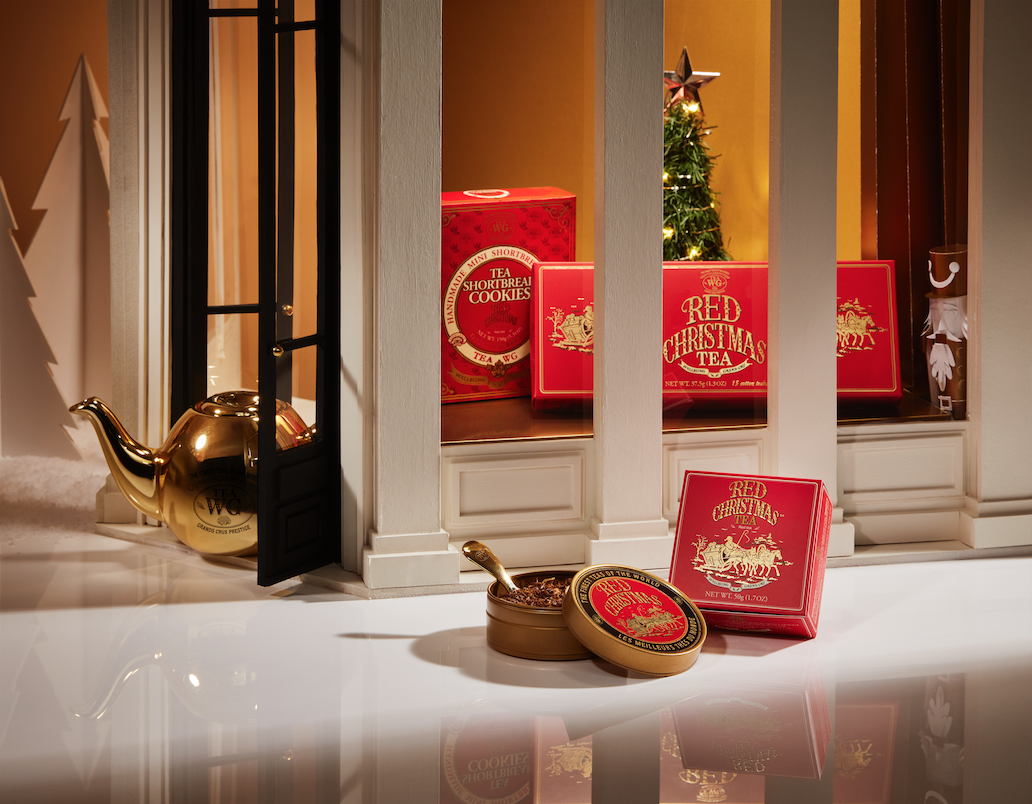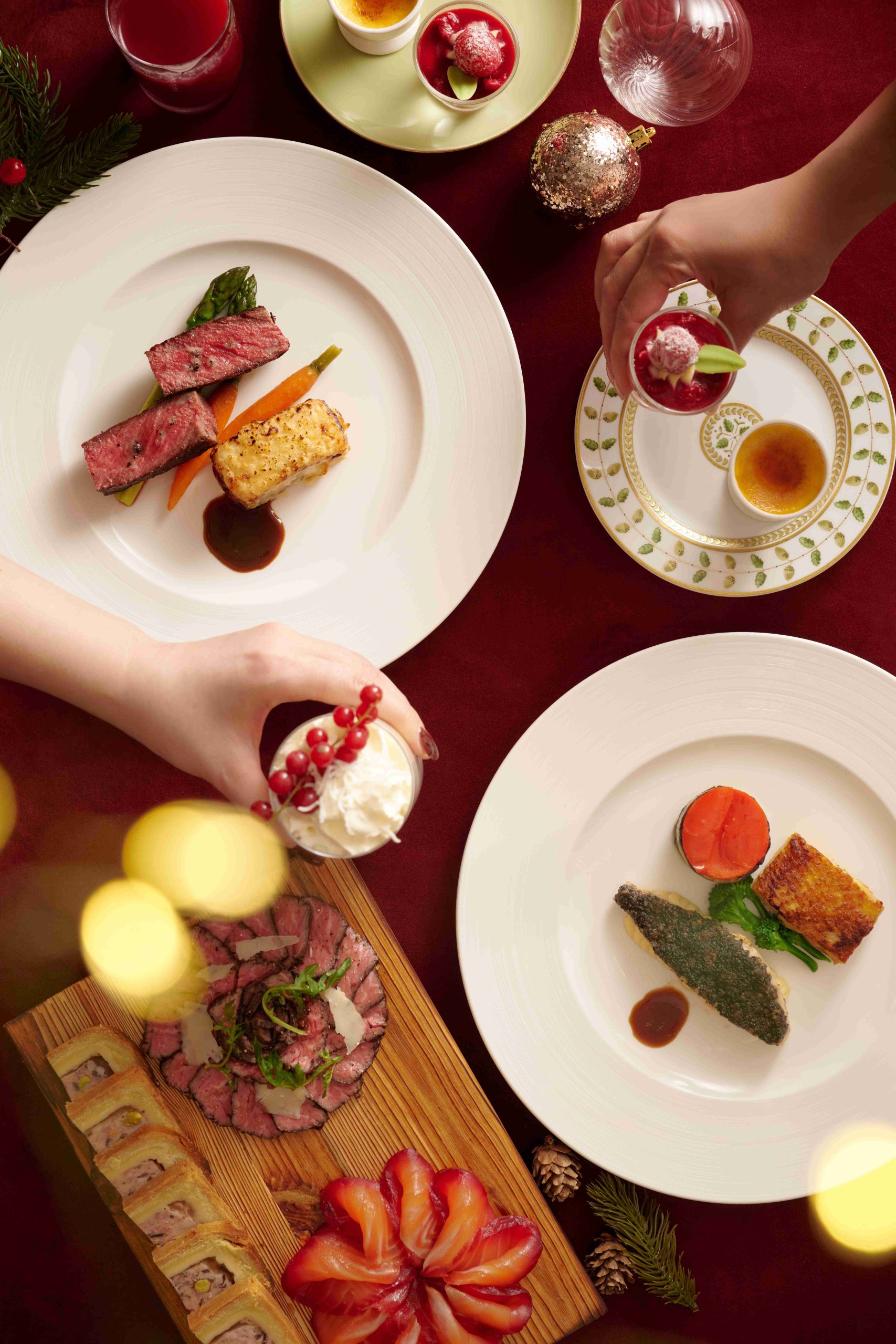In the 21st century, a woman can be whoever she wants to be – and she can declare it loud and proud through her sartorial selection. But it wasn’t always so. From the age of total control to the era of freedom, Zaneta Cheng rediscovers how fashion through the ages has been forever changed by feminism and a few key figures.
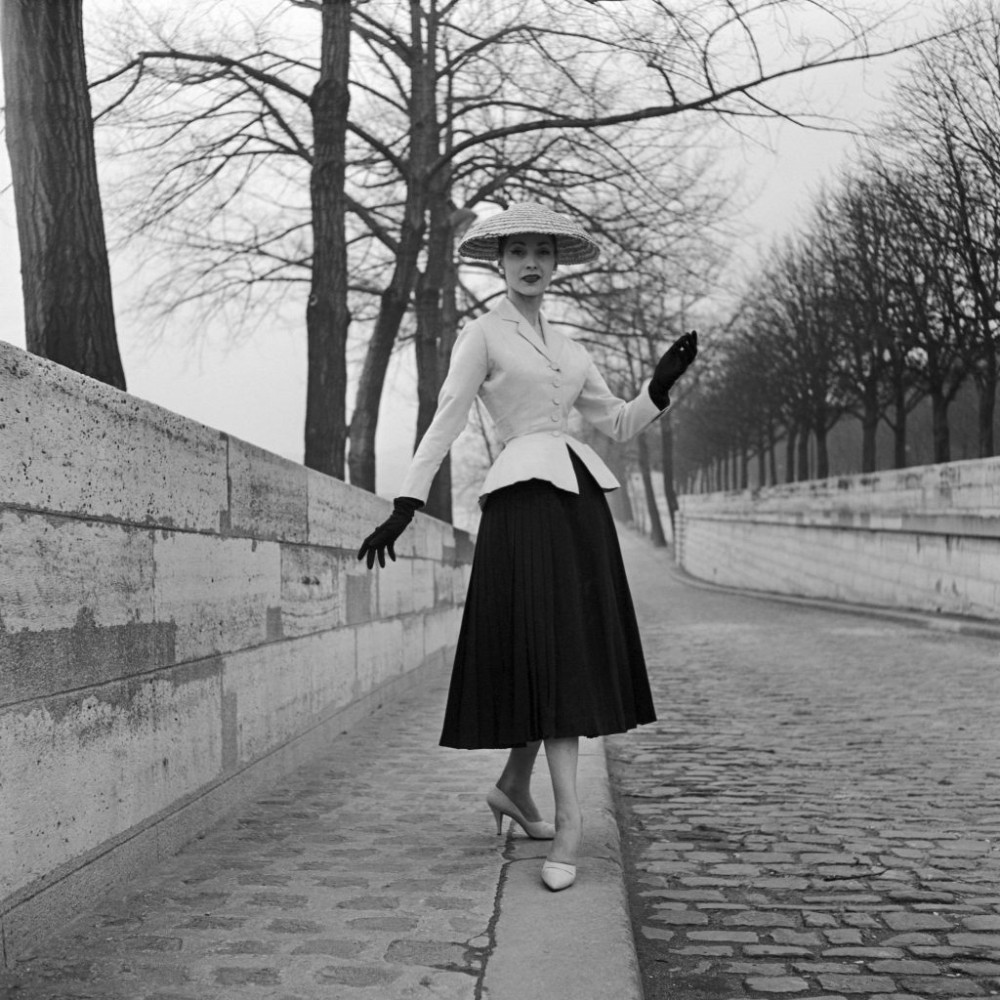
A glance at today’s runway shows displays an overabundance of women’s trends – so much so that the editor’s task of pinpointing trend directions for the next season has become a complicated and difficult one. Women are more spoilt for choice in the 21st century as to what they can put on their bodies than any period before.
As designers interpret (and reinterpret) trends and garments of yore for the present, women today can be dressed to the hilt in frills and girly frippery one day, then stomp down a street in a trench coat and boots the next, before switching into a crop top and sweats with a pair of Balenciaga knife pumps for the evening. Turtlenecks are now seen as sensual on the female form, as is Jennifer Lopez striding down the Versace catwalk in Milan dressed in a wisp of a dress. The boundaries of femininity and sexuality have, over the course of the 20th and 21st centuries, been smashed, blurred, manipulated and pieced together to form a completely new paradigm.
This wasn’t always the case – and in many parts of the
world, this is still not the norm. Since the days of ancient
Rome, women’s bodies have been policed within an inch
of their lives and fashion became one of the primary
forms of control. Shrugging on a blazer and laughing at
Angelina Jolie’s thigh-high split might seem like passing
thoughts now, but not too long ago, both would have
been punishable taboos. The right to flash a leg or to put
on a suit was fought for, tooth and nail, by women who
refused to be boxed in.
While fashion was used as a tool of patriarchal oppression, it has equally been used by revolutionary women as a vehicle for female empowerment and liberation. The choice between a pantsuit and a puffed- sleeve backless Cecilie Bahnsen dress might have once caused social furore, but these days fashion serves as a vehicle for women to define for themselves what it means to be female.
PAST
Policing women’s bodies has been practised at least as far back as the Roman Empire. Throughout history, different cultures have boxed in and subjugated women through unique sartorial means. While controlling women’s bodies and actions was the primary purpose, each unique dress code and fashion trend pursued a slightly different end. The earliest control of women’s dressing was used to signify availability. Societies used a variety of garments and accessories such as the veil to distinguish married women from unmarried ones.
While paintings and murals may make it seem as though Roman men and women wore togas, the way the cloth was draped denoted significantly different positions in society. Upper-class women wore the stola (a long tunic) to signify respectability, while the toga was donned by working women. The distinction needed to be made so that men could know who they could violate and the stola communicated feminine virtue. Insulting a woman wearing the latter would equate to insulting the man whose wife she was.
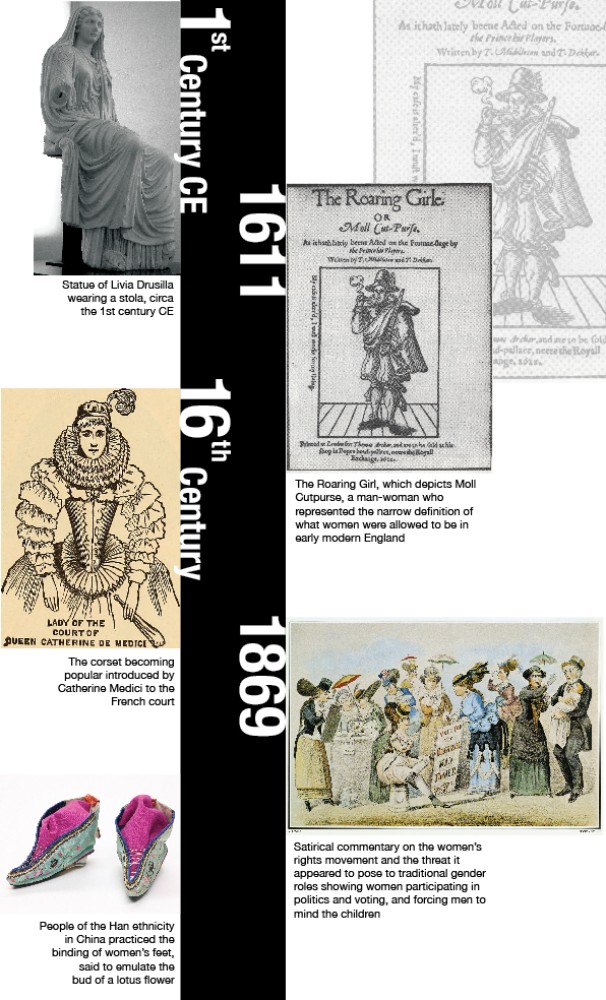
Meanwhile, in Mesopotamia, Greek women had their clothes inspected by appointed male judicial officers called “controllers of women” who were elected to ensure women looked chaste in public. At the time, many of these women were veiled. In his essay Moralia, ancient Greek philosopher Plutarch discusses the licentiousness of men, and that it is the woman’s responsibility to avoid male attention by shielding her body and face. This Greek tradition not only formed the basis of dress codes today, but laid the foundation to the still common perception that women must dress appropriately in order to avoid harassment by men on the street. A few hundred years later, in the Middle East, hijab, which translates to “veil” or “seclusion”, was introduced by Muhammad to his wives as more men began entering the mosque where he lived.
Beauty ideals began to be aligned with practises that limited women. In ancient China – and up into the early 20th century – foot-binding became a coveted quality in a woman after stories about an emperor falling in love with a dancer with bound feet entered the common realm. Poems were written about the delicate sway of a woman in lotus shoes for hundreds of years, despite the fact that millions of feet were disfigured and suffered infection. It promised marriage into well-to-do families and was meant to indicate that the woman could live a life of assisted leisure, as the condition of her feet often meant that her mobility was limited.
In the West, corsets are among the most well-known fetishes. First becoming popular in the 16th century, it was introduced by Catherine Medici to the French court, where the corset was seen as creating an ideal woman’s figure; the garment reached its peak in the Victorian era. Of course, when a lady can’t breathe, she has hardly enough breath to put a foot out of place. Women who wore trousers in this period were considered aberrations, as can be seen in Thomas Middleton’s 1611 Jacobean stage play The Roaring Girl, which depicts Moll Cutpurse, a “man-woman” who represented the narrow definition of what women were allowed to be in early modern England.
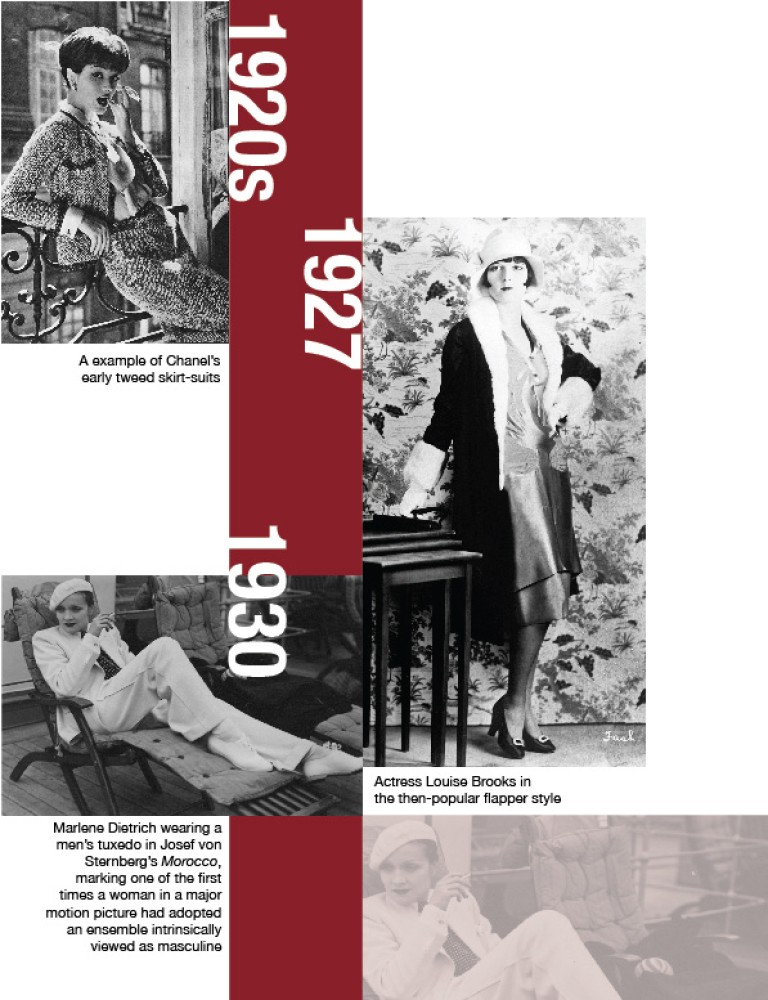
Change
Change first came in the form of the suffragettes during Edwardian England and fashion played a crucial part in breaking gender boundaries. Colours of the suffragette movement were purple, green and white, which symbolised loyalty, hope and purity, respectively. While many of the suffragettes continued wearing their Edwardian gowns, Amelia Bloomer advocated for women’s rights in a tunic and bloomers.
Ease of movement is one of the great hallmarks of women’s liberation – and Coco Chanel transformed the landscape of womenswear in the early 20th century with her signature tweed skirt-suit, which relaxed the nipped corsets of the past and adopted a more masculine silhouette that allowed its wearer greater movement. The designer herself created waves in Deauville society when she wore trousers and Breton stripes out and about, in a country where the law prohibiting women from wearing trousers in public was only overturned in 2013.
In the second Sex and the City movie (2010), Carrie Bradshaw takes a page out of old Hollywood on her trip to the Middle East and hails a cab by showing her ankle and legs. If it weren’t for the flappers of the Roaring Twenties – when hemlines rose, corsets were cast aside from straighter silhouettes, boyish styles like cropped hair emerged and bold women became de rigueur – she might have found herself restricted by such modes of propriety, even in the West.

Thanks to the precedent set by the flappers of the 1920s, Hollywood stars such as Katherine Hepburn and Marlene Dietrich began embracing menswear as everyday dress, eschewing the skirt suit for a full-blown pantsuit. And just like that, in no small part to celebrities, trousers were popularised and normalised into the woman’s wardrobe.
While revolutionaries such as Coco Chanel, Elsa Schiaparelli and countless other women played a part in overturning ideas of sartorial modesty and propriety in the early part of the 20th century, it was the short labour supply in the Second World War that gave women more agency than they had ever had before. In 1940s America, the wartime cultural icon Rosie the Riveter introduced utilitarian boilersuits and jumpsuits with boots, hair scarves and slacks. Denim saw rising popularity during this era and women’s clothing finally shed its restrictions, giving ladies more room to move than ever before.
It’s also worth noting that the modern bikini was invented by French engineer Louis Réard in the mid-1940s in response to material rationing – to great public outrage. It’s testament to how well-ingrained the “good-girl” dress codes were embedded in social consciousness that he had to hire 19-year-old nude dancer Micheline Bernardini to model his design, as the regular models refused to wear it.
The end of the war saw a regression into traditional gender roles as husbands returned to the workforce. Women went back to the home – and it was this moment of exaggerated femininity that spurred Christian Dior’s New Look, which was a welcome reprieve from the utilitarian looks of wartime. The Bar suit represented a return to extravagance and glamour, as the cinched-in bar jacket gave way to a full A-line skirt with a stiff petticoat underneath to give the skirt more support.
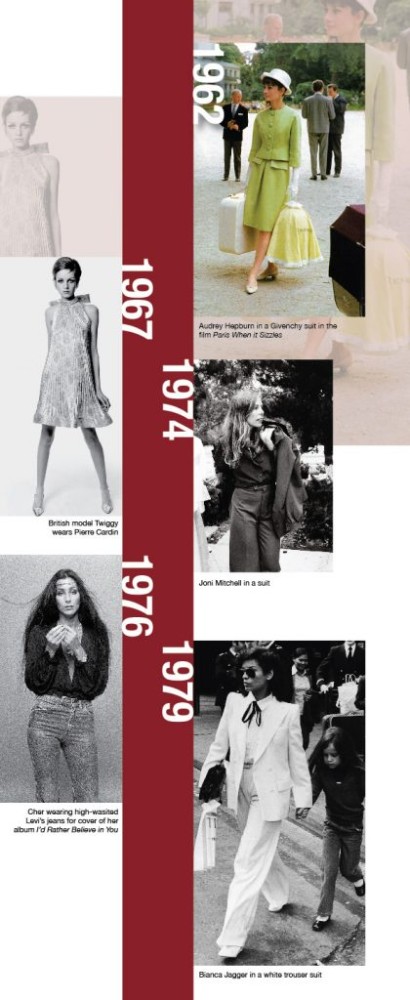
Second-wave feminism in the late 1960s saw the invention of Mary Quant’s miniskirt. Thanks to Brigitte Bardot’s association with the bikini, the three-piece swimsuit
was incredibly popular. Yves Saint Laurent introduced his iconic Le Smoking, a pantsuit for women that incorporated straight-legged trousers, a tailored jacket, an organza shirt, a bow tie and a wide satin belt that once again changed the codes of women’s dressing.
Many saw the suit as a disruption to the traditional order and when one of the original ladies who lunched, American socialite Nan Kempner, tried to get into New York’s La Côte Basque restaurant for lunch, she was refused entry for not adhering to the dress code; she was only let in when she took off her trousers and went into the restaurant with her blazer worn as a dress. British model Twiggy also broke the mould with her boyish figure, which almost instantly put the hourglass figure out of style.
The ’70s and ’80s saw an escalation in the second-wave feminist movement and the line between menswear and womenswear became increasingly blurred as high-waisted trousers and colourful power suits became stylish. Stars such as Grace Jones redefined femininity for a new generation of women who aspired to new roles in the workforce and in society.
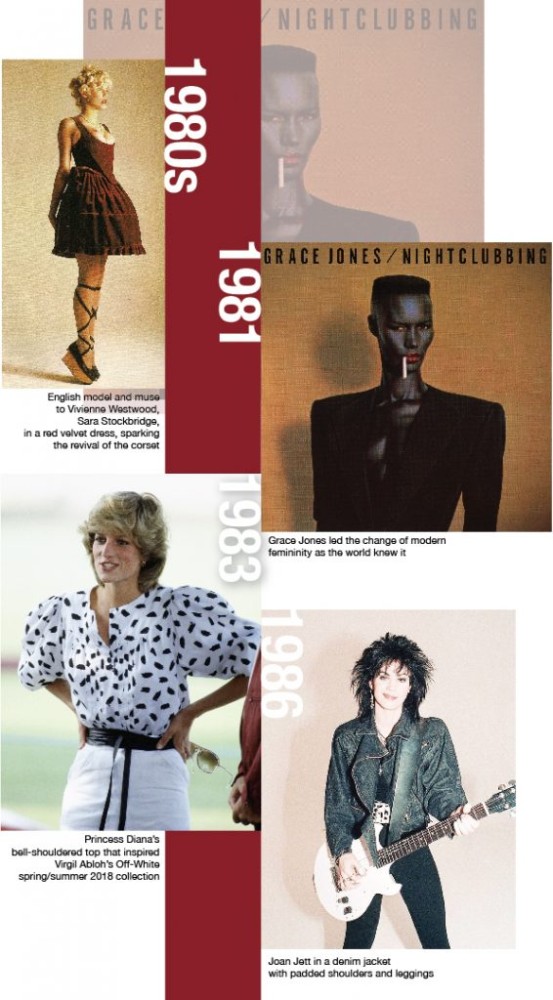
The ’80s also saw a movement towards exaggerated femininity and sexuality with Jean-Paul Gaultier’s cone bra, a creation he originally designed for his teddy bear, which was worn by Madonna on her Blond Ambition tour in 1990. Corsets also experienced a feminist revival in the 1980s, where the sexual politics of the garment was embraced and manipulated by young fashion designers such as Gaultier and Vivienne Westwood, who both took the traditional undergarment and made it a piece of outerwear, worn alone as a piece of third-wave feminist attire – both ironic and powerful.
Grunge and punk took over the ’90s and flannels, ripped jeans and graphic tees became cool as they further expanded the boundaries of femininity. The ’90s was also a period where musicians reclaimed traditional “girly” signifiers such as lace, the colour pink and hearts to give them new, alternative, tougher associations.
The alternative music scene, coupled with youth culture, gave way to the rise of street style throughout the 2000s – the ultimate indicator of how society’s dress codes have relaxed throughout the 20th century.
The pinnacle of this moment might be encapsulated by Phoebe Philo, who took the woman’s wardrobe into 21st-century modernity when she strode down the
Céline runway in Stan Smith Adidas trainers and turtlenecks, throwing away ideas of femininity that revolved around sexualisation of the female body, instead giving the contemporary woman carefully curated, well-cut and comfortable collections that didn’t get in the way of women living their lives however they wished.
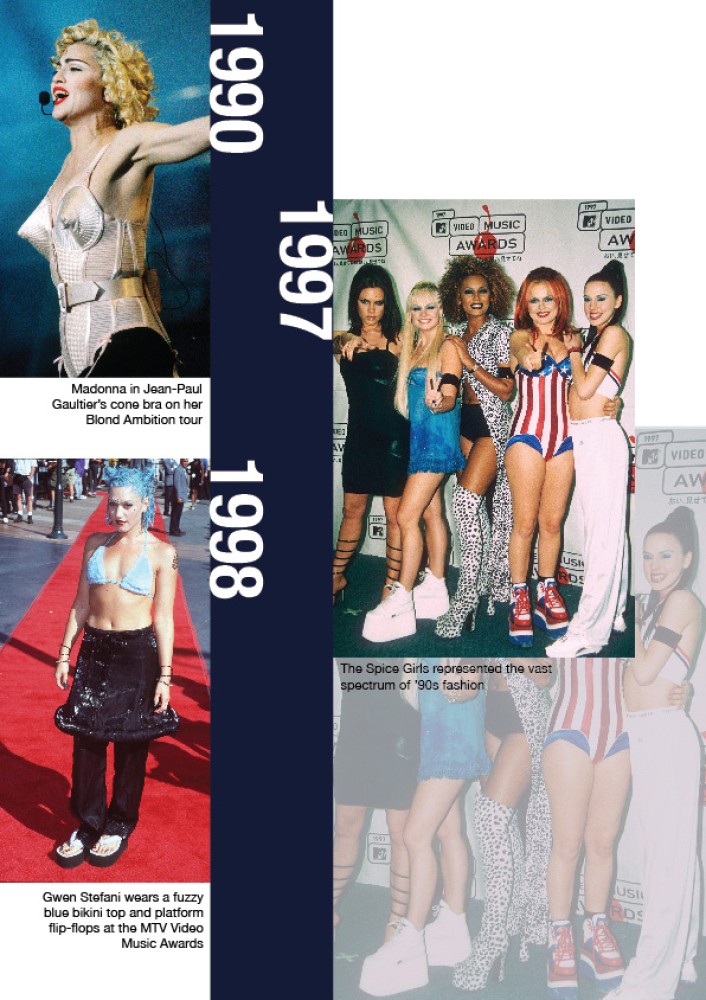
Present
Cut to the present day and we can now see a plethora of references across runways. Maria Grazia Chiuri’s tenure at Dior has certainly ushered in a new relationship between fashion and femininity where the former promotes the cause of the latter. For her debut collection in spring summer 2017, Chiuri introduced her now famous “We Should All Be Feminists” slogan on a T-shirt. Celebrating women has become a cornerstone of Chiuri’s Dior and autumn winter 2020 introduced “I Say I”, the season’s slogan, lifted from Italian critic and activist Carla Lonzi as models strode down a catwalk with flashing neon signs saying “Consent Consent Consent” and “When women strike the world stops” designed in collaboration with anonymous art collective Claire Fontaine.
While streetwear has enjoyed a lengthy run, the collections of the new decade seem to indicate a return to rather sombre fashion, preferring bourgeois sensibility and tailoring to the tracks suits that were celebrated only a year ago. At Celine, Hedi Slimane has dived into the French house’s archives for inspiration, producing collection after collection that are dead ringers for Catherine Deneuve’s wardrobe and style in Luis Buñuel’s seminal 1967 film Belle de Jour.
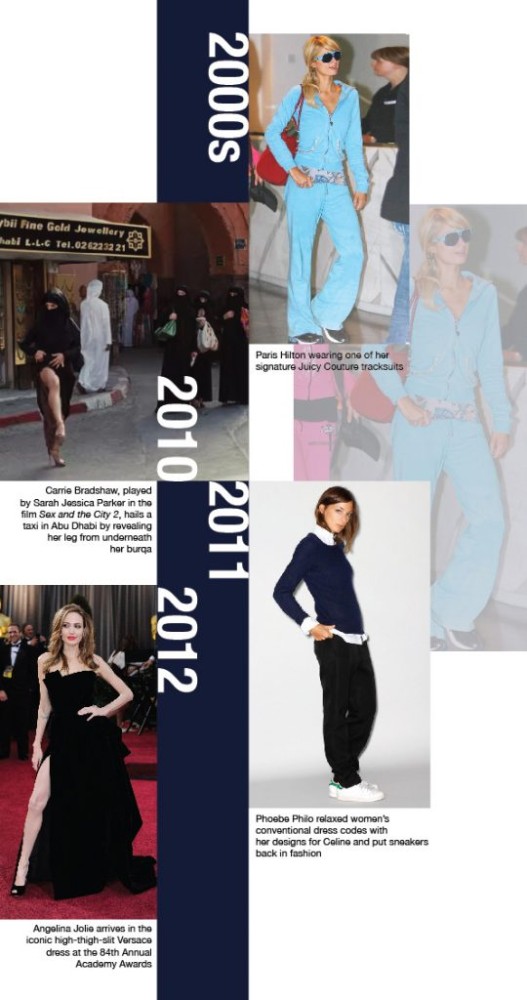
Thanks to the twists and turns in fashion throughout the 20th century, women have more breadth than ever before to be whoever they want to be. In a time when #MeToo has made an impact and Harvey Weinstein has been sentenced to 23 years in prison, a girl can wear the shortest of miniskirts (like those seen in Prada’s spring/summer 2020 offering) one day and a terrycloth ensemble the next.
In one of the more entertaining and possibly meaningful acts of fashion reclamation, traditional signifiers of virginal femininity – like the puffed-sleeve dress, the midi-to-maxi Edwardian-inspired gown and even the princess ball gown – have all seen a revival of late by designers who are redefining the dresses for contemporary women today. Designers such as Molly Goddard, whose bubble-gum profusions of tulle have been given prime-time billing on shows like Killing Eve, in which fanciful yet sociopathic assassin Villanelle spends her hard-earned cash on a saccharine frock of fancy. In London, demure dresses by The Vampire’s Wife have made it into the closets of every fashion girl (and even Kate Middleton’s frock rotation), while Batsheva offers a kooky rendition of pastoral prairie-girl dresses that pronounces the death of “sexy” while giving modest femininity a bit more personality.
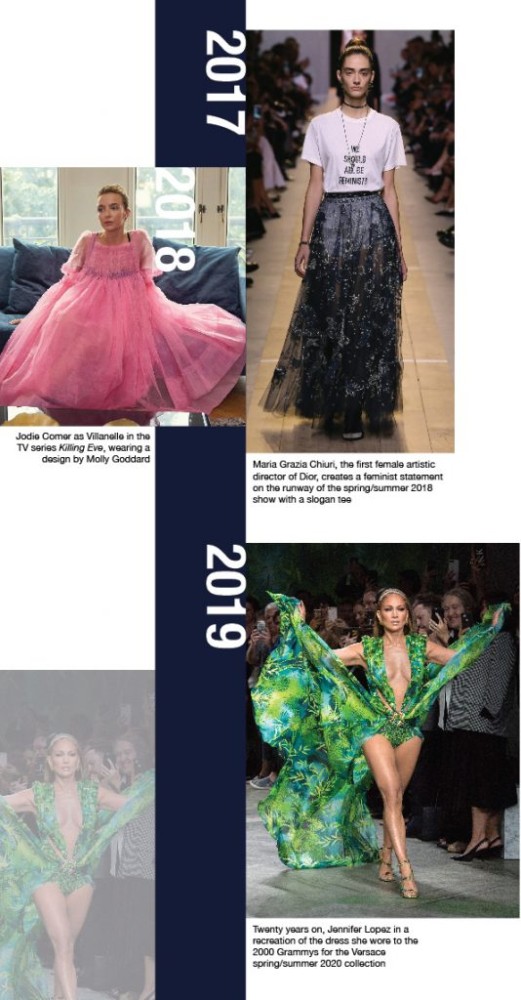
Future
So what does the future hold? We know now that the future will hold change – drastic changes. Thanks to a pandemic that has put the world on pause, when the world once again presses play, many industries will have to simultaneously press reset. As fashions once adjusted to suit wartime, our fashions today will adjust to work with this unprecedented period.
Already, designers have been putting their unique touches on face masks, adorning and decorating a piece of covering that will become a part of our new normal in the months to come. Gloves, relegated to white-tie events and winter, will be a perennial part of women’s wardrobes. In a new era where disinfectant is as precious as gold, clothes are required to be machine-washable at the highest, most sanitary setting. Will this all echo what we saw at Miuccia Prada’s spring/summer 2020 runway show, where simpler basics became the norm and dry-clean fabrics were relegated to theist, making way for sturdy cottons, linens and washable silks?
While it’s impossible to say if we’ll be opting for sweatpants or suits in the coming months, one thing for sure is that we’re living through a pivotal moment in history – and when it’s over, women and their wardrobes will again have changed with the times. #
See also: A brighter future with industry leaders



